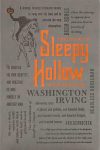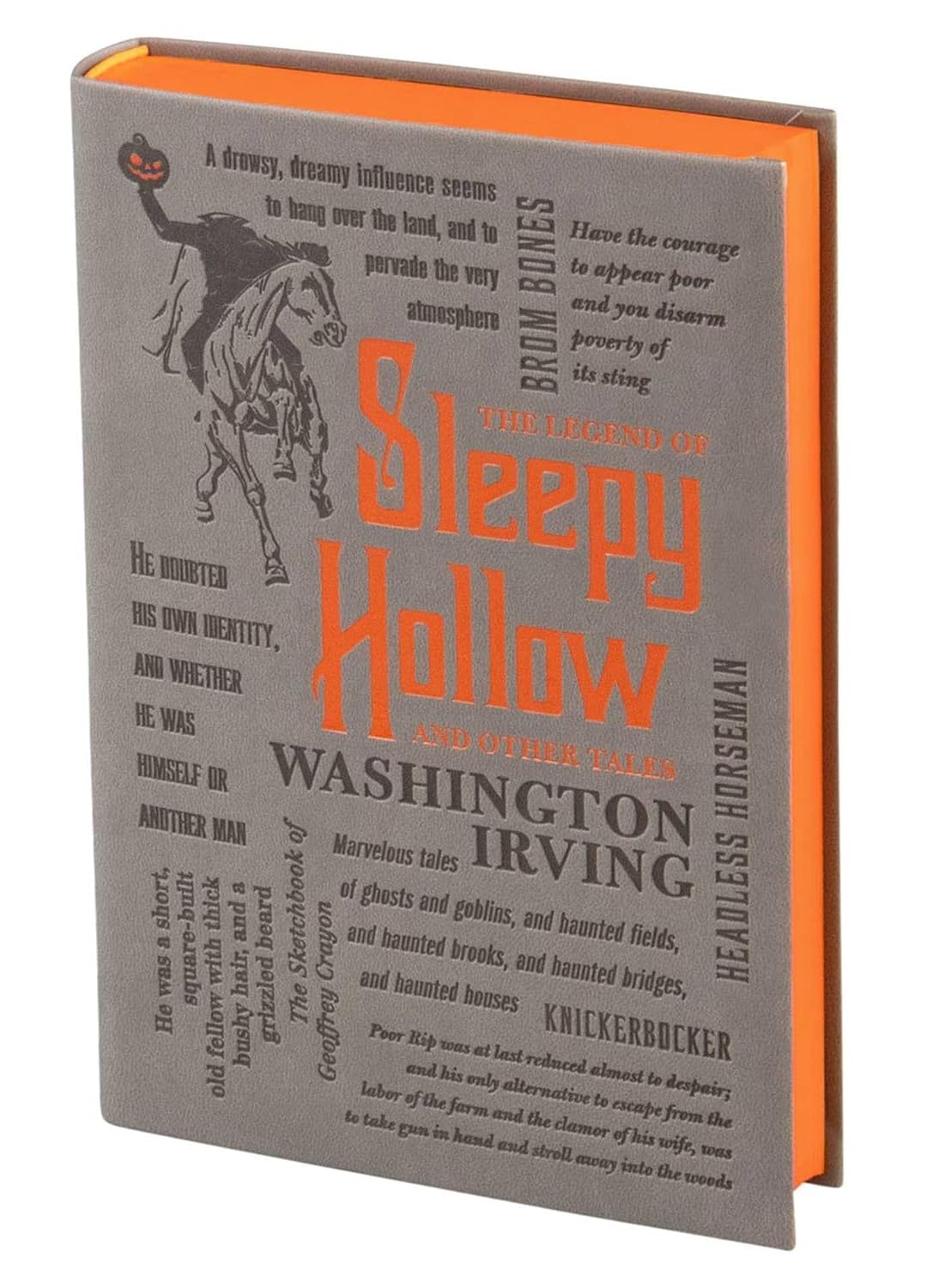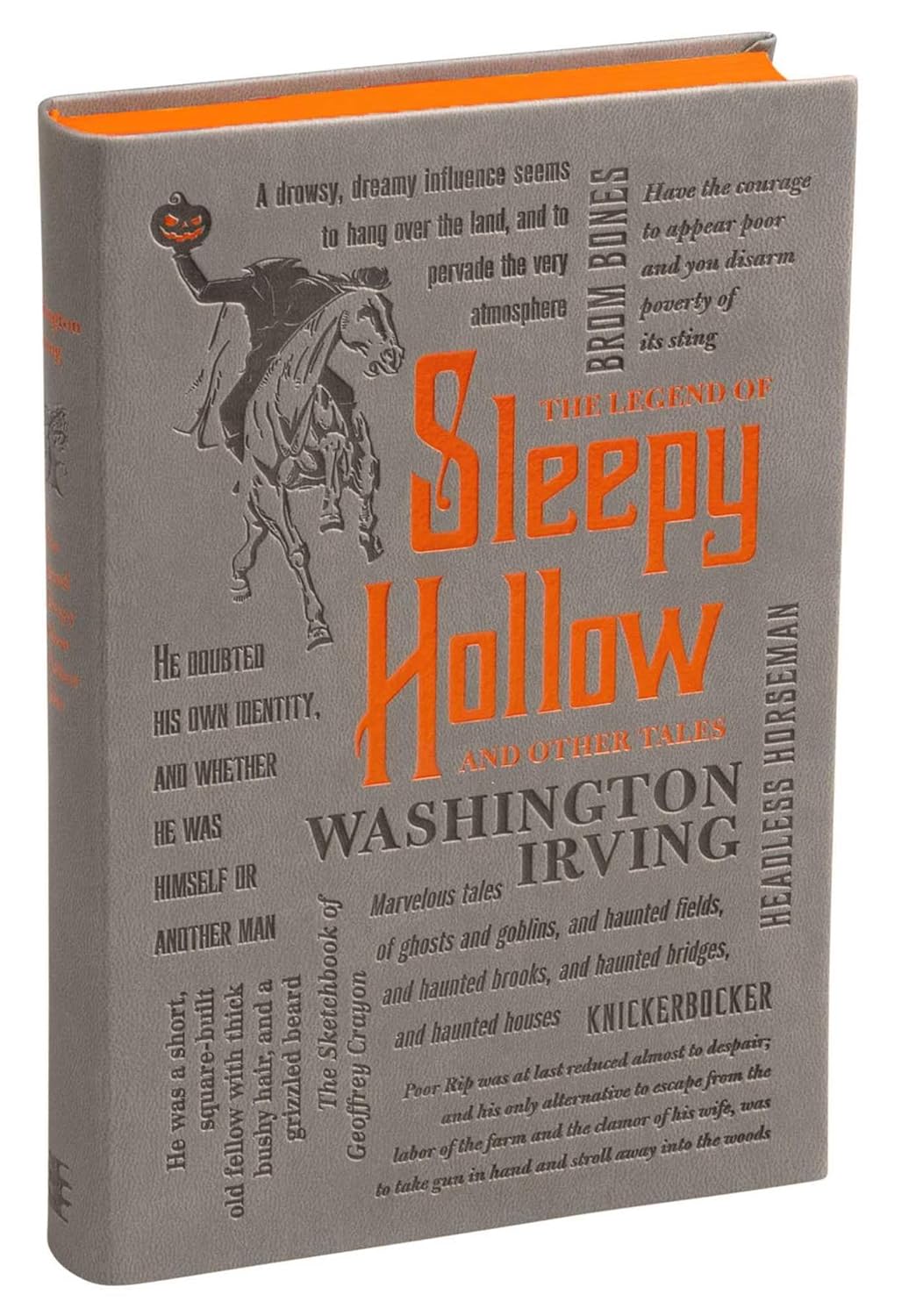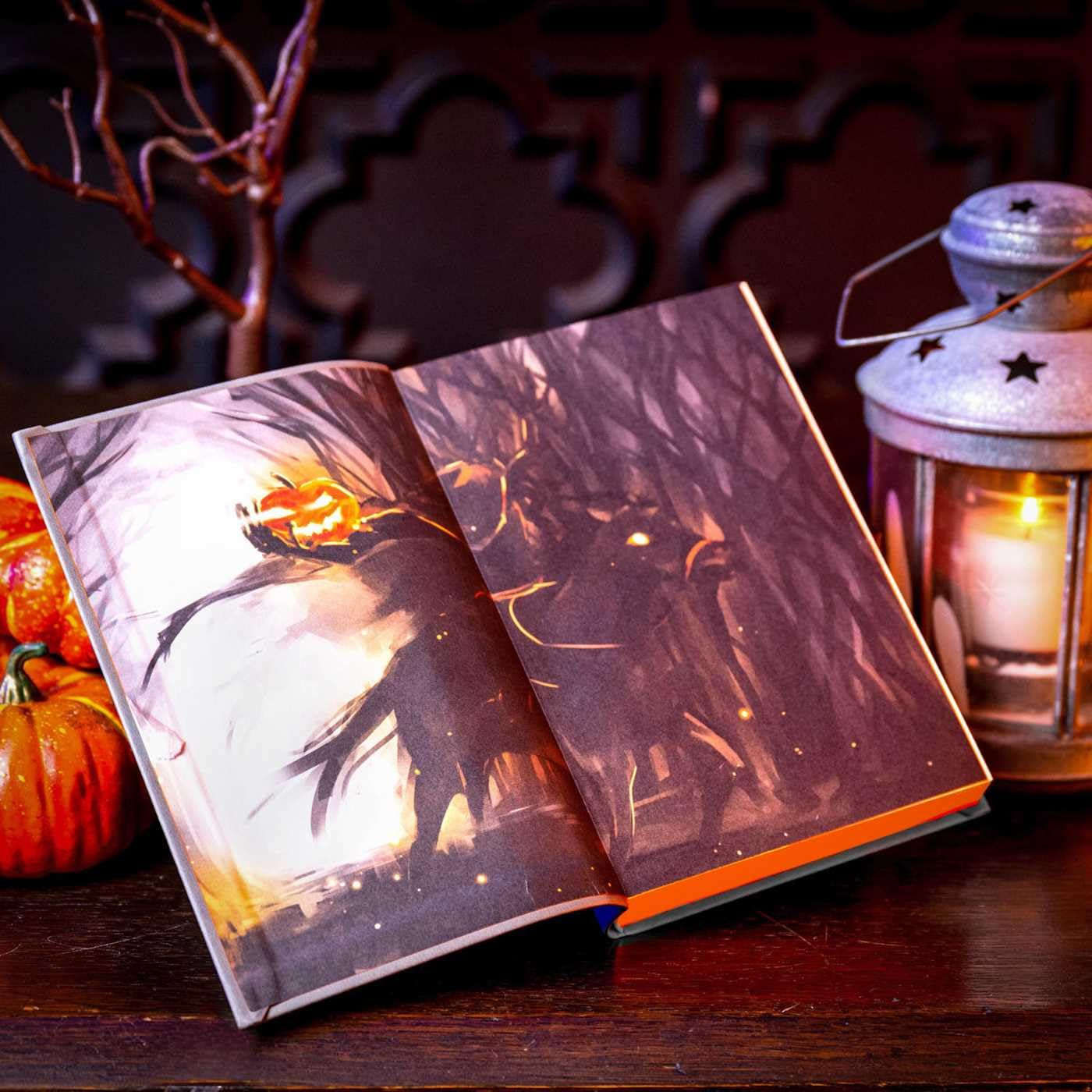
The Legend of Sleepy Hollow and Other Review Sleepy Hollow – Oemiu
The Enthralling Allure of Sleepy Hollow
Washington Irving’s “The Legend of Sleepy Hollow” isn’t just a story; it’s an experience. It’s a carefully crafted blend of folklore, humor, and suspense, all set within the picturesque, yet subtly unsettling, landscape of a small Dutch settlement in 1790s New York. The story’s enduring appeal lies in its ability to tap into primal fears – the fear of the unknown, the fear of the supernatural, and perhaps most poignantly, the fear of being an outsider. Irving masterfully builds an atmosphere thick with superstition and local legend, making the reader susceptible to the same anxieties that plague Ichabod Crane. The quaint descriptions of the Tarry Town and Sleepy Hollow area immediately transport the reader to a simpler time, yet one fraught with anxieties rooted in old-world beliefs.
The protagonist, Ichabod Crane, is a fascinating study in contrasts. He’s a schoolteacher, a figure traditionally associated with knowledge and rationality, yet he’s also deeply susceptible to the local tales of ghosts and goblins. This contradiction makes him both comical and relatable. We laugh at his gullibility, but we also recognize the human tendency to find comfort, or at least distraction, in the fantastic when faced with the uncertainties of life. Ichabod’s ambition also fuels the narrative. His desire for Katrina Van Tassel’s hand in marriage, and more specifically, her family’s considerable wealth, drives him to compete with the burly Brom Bones. This romantic rivalry serves as a catalyst for the climactic events, blurring the lines between the real and the imagined, leaving the reader to question whether Ichabod’s encounter with the Headless Horseman was a genuine supernatural event or merely a cleverly orchestrated prank. The tale of Sleepy Hollow truly captivates audiences with its unique blend of American gothic elements and classic folklore. Irving’s meticulous setting description immerses the reader in the quaint but haunting environment of Sleepy Hollow.
Unpacking the Narrative: Characters and Themes
At its core, “The Legend of Sleepy Hollow” is a story about the clash between reason and superstition. Ichabod Crane, representing a more modern, intellectual perspective, is pitted against the deeply ingrained folklore and beliefs of the Sleepy Hollow community. This conflict is embodied in the figure of the Headless Horseman, a symbol of the past and its enduring influence over the present. The story doesn’t necessarily condemn superstition outright. Rather, it explores the power of belief and how it can shape our perceptions of reality. The reader is left to ponder whether the Headless Horseman is a genuine spectral figure or simply the product of Ichabod’s overactive imagination, fueled by the local legends.
Katrina Van Tassel, while seemingly a passive character, plays a crucial role in the narrative. She’s the object of both Ichabod’s and Brom Bones’ affections, and her choice ultimately determines the course of events. Some critics argue that Katrina is more cunning than she appears, subtly manipulating the situation to her advantage. Regardless, she embodies the allure of wealth and status, representing the practical concerns that often drive human behavior. Brom Bones, on the other hand, is the quintessential local hero, a strong and resourceful figure who embodies the traditional values of the community. He’s a master of pranks and practical jokes, and his rivalry with Ichabod adds a layer of comedic tension to the story. This tension escalates into a dramatic chase scene when Ichabod attempts to woo Katrina, ultimately leading to the climactic encounter with the legendary Headless Horseman in Sleepy Hollow.
Furthermore, the theme of social climbing is subtly woven into the narrative. Ichabod’s ambition to marry Katrina isn’t purely based on love; he’s also drawn to her family’s wealth and the prospect of a more comfortable life. This highlights the social and economic disparities that existed in early American society. While the story is primarily a work of entertainment, it also offers a glimpse into the social dynamics of the time, revealing the complex motivations that drive human behavior. Overall, the allure of the region, the mysteries of Sleepy Hollow and the characters make the story a lasting American classic.
Modern Adaptations: Exploring the Legacy of Sleepy Hollow
“The Legend of Sleepy Hollow” has had a profound influence on popular culture, inspiring countless adaptations across various media. From films and television series to stage productions and comic books, the story continues to resonate with audiences in new and exciting ways. One of the most notable adaptations is Tim Burton’s 1999 film, “Sleepy Hollow,” starring Johnny Depp as Ichabod Crane. Burton’s version takes a darker, more gothic approach to the story, emphasizing the horror elements and creating a visually stunning spectacle. While the film deviates from the original text in some ways, it captures the essence of the story’s atmosphere and its exploration of the supernatural.
Television series like “Sleepy Hollow,” which aired from 2013 to 2017, offer a more modern and reimagined take on the tale. The series transports Ichabod Crane to the 21st century, where he teams up with a female police officer to fight supernatural forces. While this version departs significantly from the original story, it retains the core themes of good versus evil and the clash between reason and superstition. These adaptations show the evolution of the story, adapting to modern audiences.
Beyond film and television, “The Legend of Sleepy Hollow” has also inspired numerous stage productions, allowing audiences to experience the story in a live and immersive setting. These productions often incorporate elements of music, dance, and puppetry to bring the story to life. The enduring popularity of “The Legend of Sleepy Hollow” is a testament to its timeless themes and its ability to captivate audiences across generations. The name Sleepy Hollow itself has become synonymous with mystery and the supernatural, cementing its place in the cultural lexicon. The story’s influence extends beyond direct adaptations, inspiring countless other works of literature, art, and music. The tale continues to inspire creatives, each of them exploring the possibilities of Ichabod’s night in Sleepy Hollow.
| Adaptation | Medium | Key Features | Strengths | Weaknesses |
|---|---|---|---|---|
| Tim Burton’s “Sleepy Hollow” (1999) | Film | Gothic horror, visually stunning, deviates from the original story | Strong visuals, memorable performances | Significant deviations from the original text |
| “Sleepy Hollow” (TV Series 2013-2017) | Television | Modern reimagining, Ichabod Crane in the 21st century, supernatural battles | Unique premise, engaging action | Significant departure from the original story |
| Various Stage Productions | Theater | Live performances, immersive experience, incorporation of music and dance | Direct audience engagement, creative interpretations | Limited reach compared to film and television |
The Enduring Appeal: Why Sleepy Hollow Still Matters
The story of “The Legend of Sleepy Hollow” endures because it taps into fundamental human emotions and anxieties. It explores the power of fear, the allure of the unknown, and the complexities of human relationships. The story’s setting, the quaint and superstitious village of Sleepy Hollow, creates an atmosphere of unease and mystery that draws the reader in. The characters, with their flaws and foibles, are relatable and engaging. Ichabod Crane’s ambition and vulnerability, Katrina Van Tassel’s beauty and practicality, and Brom Bones’ strength and cunning all contribute to the story’s enduring appeal. Furthermore, the ambiguity surrounding the Headless Horseman allows for multiple interpretations, keeping the story fresh and relevant for each generation.
The story also serves as a reminder of the power of storytelling and the importance of preserving local legends and folklore. These stories provide a sense of identity and connection to the past, reminding us of the traditions and beliefs that have shaped our communities. “The Legend of Sleepy Hollow,” with all its quirks and haunting qualities, offers a reflection on cultural values and a timeless meditation on the power of suggestion. This is a key factor in the continued popularity of the Sleepy Hollow legend. The story’s enduring appeal also lies in its ability to transport us to another time and place. The vivid descriptions of the Sleepy Hollow landscape, the quaint customs of the Dutch settlers, and the eerie tales of ghosts and goblins all contribute to a sense of immersion and escapism. In a world that is increasingly complex and fast-paced, “The Legend of Sleepy Hollow” offers a welcome escape to a simpler, more enchanting world.
The tale also provides a subtle commentary on the American identity. Ichabod, the outsider, represents the intellectual and ambitious spirit of the burgeoning nation, while the established Dutch community represents the traditions and values of the past. The conflict between these two forces is a recurring theme in American literature and history. Irving masterfully blends elements of humor, suspense, and social commentary to create a story that is both entertaining and thought-provoking. The legend of the ghostly Headless Horseman in Sleepy Hollow also lends itself to visual storytelling, resulting in many successful adaptations.
FAQ Section
What is the main theme of “The Legend of Sleepy Hollow”?
The main theme revolves around the clash between reason and superstition. Ichabod Crane, a figure representing modern intellect and education, clashes with the deeply ingrained folklore and superstitious beliefs prevalent in the isolated community of Sleepy Hollow. The story explores how these contrasting perspectives shape perceptions of reality, and the influence of fear and local legends. The reader is left to question whether the Headless Horseman is a genuine supernatural entity or a product of Ichabod’s imagination, fueled by the tales and rumors of the region, highlighting the power of belief and suggestion. The story’s ambiguity is also a key factor to its enduring popularity.
Who is Ichabod Crane, and what are his motivations?
Ichabod Crane is the protagonist of “The Legend of Sleepy Hollow.” He is a lanky, somewhat awkward schoolteacher who arrives in Sleepy Hollow from Connecticut. He is portrayed as intelligent and educated, but also highly superstitious and easily influenced by local legends. His primary motivations are to secure a comfortable life, which he believes he can achieve by marrying Katrina Van Tassel, the wealthy daughter of a local farmer. His pursuit of Katrina is driven not only by affection but also by ambition and a desire for social and economic advancement. Ichabod’s gullibility and vanity make him a target for pranks and ultimately contribute to his downfall.
How does the setting of Sleepy Hollow contribute to the story’s atmosphere?
The setting of Sleepy Hollow is crucial to creating the story’s unique atmosphere of mystery and unease. Irving vividly describes the landscape as a secluded and tranquil valley, imbued with a sense of old-world charm and a strong belief in the supernatural. The area is characterized by ancient trees, winding roads, and a palpable sense of history. The isolation of the community fosters a close-knit environment where local legends and ghost stories thrive. The setting’s picturesque beauty is juxtaposed with the lurking sense of dread and the pervasive belief in the Headless Horseman, creating a captivating blend of charm and horror.
What are some of the differences between the original story and the Tim Burton film adaptation?
While Tim Burton’s “Sleepy Hollow” captures the essence of the story’s atmosphere, it also takes several liberties with the original narrative. The film expands Ichabod Crane’s character, making him a police detective with a scientific approach to solving crimes. The film also introduces a more complex plot involving a conspiracy and a series of murders. The original story focuses primarily on Ichabod’s rivalry with Brom Bones and his encounter with the Headless Horseman. The film increases the amount of violence, while the story focuses more on psychological horror. The Burton version features more horror than the subtle suspense of Washington Irving’s classic tale.
Is the Headless Horseman real, or is he a figment of Ichabod Crane’s imagination?
The answer to this question remains intentionally ambiguous, which is part of the story’s enduring appeal. The narrative presents both possibilities: that the Headless Horseman is a genuine supernatural entity or that he is merely a prank orchestrated by Brom Bones, taking advantage of Ichabod’s gullibility and fear. There is no definitive answer within the story, leaving the reader to draw their own conclusions. This ambiguity contributes to the story’s lasting power, as it invites interpretation and discussion about the nature of belief and the power of suggestion. Some might say the mystery of the Headless Horseman is what makes Sleepy Hollow famous.
What is the significance of Katrina Van Tassel in the story?
Katrina Van Tassel is a central figure in “The Legend of Sleepy Hollow,” although her role can be interpreted in different ways. She is the daughter of a wealthy farmer and is described as being beautiful, flirtatious, and possessing considerable charm. Katrina is the object of both Ichabod Crane’s and Brom Bones’ affections, and her choice of suitor ultimately influences the story’s outcome. Some critics argue that Katrina is more cunning and manipulative than she appears, using her charms to play the two men against each other. Regardless, she represents the allure of wealth, status, and romantic fulfillment, driving the plot forward.
What lessons can be learned from “The Legend of Sleepy Hollow”?
“The Legend of Sleepy Hollow” offers several valuable lessons. It cautions against excessive ambition and greed, as Ichabod’s pursuit of Katrina’s wealth ultimately leads to his downfall. It also highlights the dangers of being overly gullible and susceptible to superstition. The story emphasizes the importance of critical thinking and the need to question the validity of local legends and beliefs. Furthermore, it explores the complexities of human relationships, illustrating the importance of honesty and integrity in romantic pursuits. The tale also serves as a reminder of the power of storytelling and the importance of preserving local legends. In conclusion, it’s important to always be wary of a midnight ride through Sleepy Hollow.











